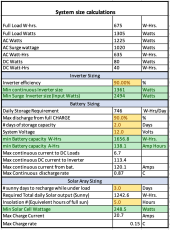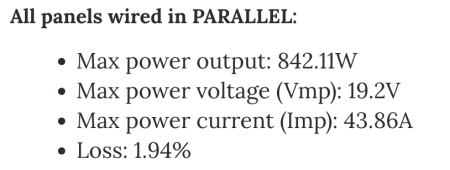Pisti
New Member
Hi,
I'm new in this forum, thus my questions might have tons of threads already.
I'm researching a solar installation for my Ford Transit Camper Van conversion, the amount of information is huge and really difficult to make a decision.
Perhaps through my "wish list" someone can point me in the right direction:
a. 850-1000W solar panel installation
b. It seems to me that a 12V installation will be more efficient despite the upfront cost of cables and connections, a technical argument/suggestion is welcome here.
c. Since this van is for leisure, it will be parked in my driveway during weekdays. I'm planning to use this installation to run my home AC or use it as backup during blackouts. It won't be integrated with the grid.
d. Based on "c" what's the recommended minimum inverter? I believe a 3KW pure sine wave inverter should be enough, any thoughts?
e. I'm also planning to use such available solar power to charge my EV (Chevy Bolt), any special consideration in the project?
f. I want short power and alternator imput as well.
g. I'm planning to install most of the components (except the batteries) in the voids on transit walls, so I'm OK with multiple components, however a integrated solution is desirable, suggestions?
example:

I'm new in this forum, thus my questions might have tons of threads already.
I'm researching a solar installation for my Ford Transit Camper Van conversion, the amount of information is huge and really difficult to make a decision.
Perhaps through my "wish list" someone can point me in the right direction:
a. 850-1000W solar panel installation
b. It seems to me that a 12V installation will be more efficient despite the upfront cost of cables and connections, a technical argument/suggestion is welcome here.
c. Since this van is for leisure, it will be parked in my driveway during weekdays. I'm planning to use this installation to run my home AC or use it as backup during blackouts. It won't be integrated with the grid.
d. Based on "c" what's the recommended minimum inverter? I believe a 3KW pure sine wave inverter should be enough, any thoughts?
e. I'm also planning to use such available solar power to charge my EV (Chevy Bolt), any special consideration in the project?
f. I want short power and alternator imput as well.
g. I'm planning to install most of the components (except the batteries) in the voids on transit walls, so I'm OK with multiple components, however a integrated solution is desirable, suggestions?
example:






